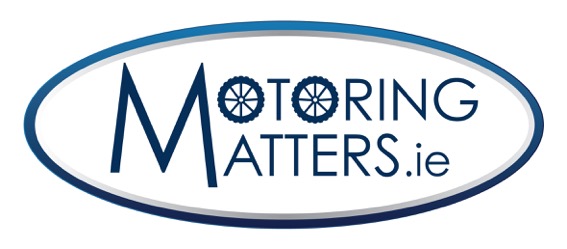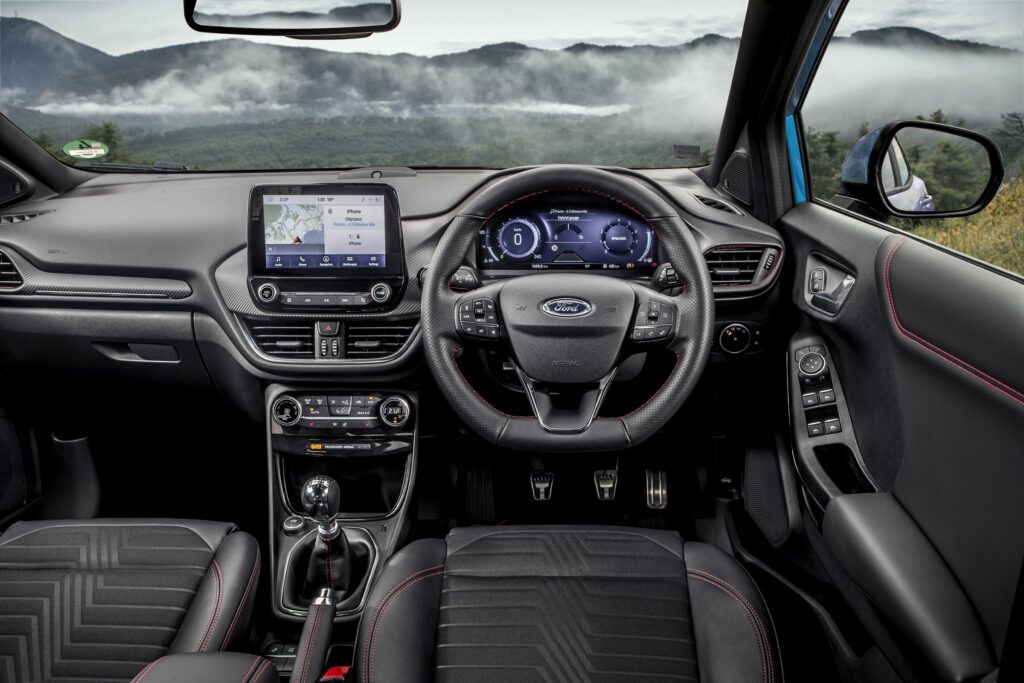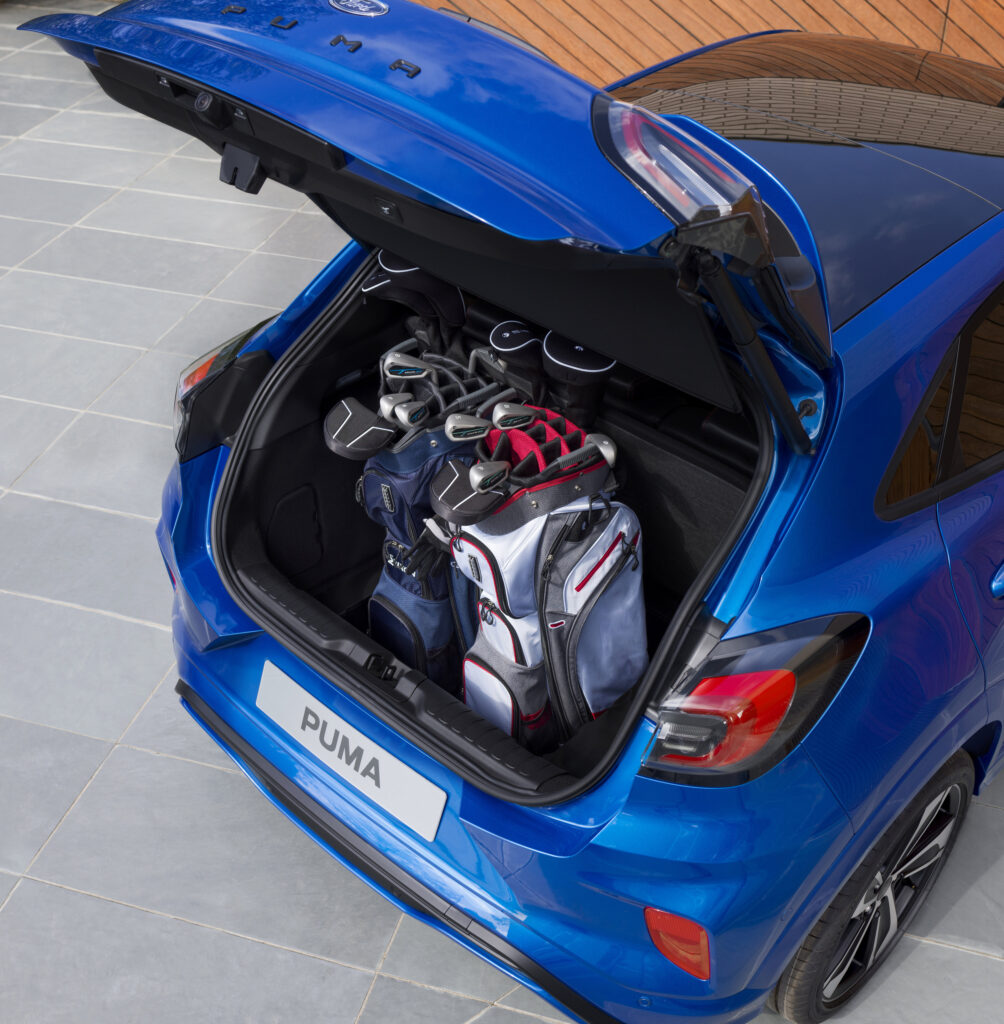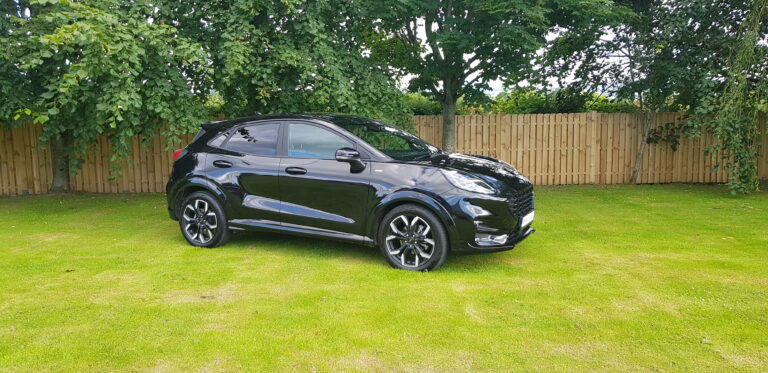
By Breda Corrigan
Back in the 1990’s the original Ford Puma was a small and very fashionable coupe built on the underpinnings of the Fiesta, and powered by modest engines. It was a compact, front-wheel drive sports car, which was only sold in Europe from 1997 until 2001, but in that time had built up a loyal following. Now the Ford Puma is back, still based on the underpinnings of the lastest Fiesta, it is now an SUV, rather than a small and sporty coupe. The Puma is a considerably larger vehicle, longer, wider and taller with a substantially larger boot. It is a rival to the style-driven Nissan Juke and Renault Captur.

The Puma’s curvy body, confident front grille and signature high-mounted headlights make it look aggressive. Powering the new Ford Puma is Ford’s popular 1.0-litre, 123bhp, three cylinder EcoBoost petrol engine, along with a 1.5-litre turbo-diesel engine with 118bhp available with a 6-speed manual gearbox as standard with both engines. Both engines come with mild hybrid technology (mHEV) to improve fuel efficiency. Also available is a 7-speed automatic, as an option with the petrol power plant.
Specification Options;
The new Puma is available in a choice of four specifications – Titanium, ST-Line, ST-Line X, and range-topping ST Line X Vignale. Standard specification across all trim levels is impressive, with even the entry-level Titanium model coming with such key features as 17-inch machined alloy wheels, projector headlamps with LED day time running lamps, auto high beam, Pre-collision assist with Autonomous Emergency Braking, 8-inch SYNC with Navigation and FordPass Connect modem, keyless start, electronic air-conditioning, Quickclear heated windscreen, Thatcham alarm, Ford EasyFuel system, lumbar massage driver & passenger seats, ambient lighting, wireless charging, cruise control with adjustable speed limiter, and a rear spoiler. Stepping up to the Puma ST-Line will add ST-Line sports body kit, large rear spoiler, fog lamps with cornering feature, ST-Line sports exhaust, 12.3-inch digital cluster, dark sports headliner, flat-bottom steering wheel, and alloy pedals and gear knob, while the ST-Line X model also features 18-inch matt black alloy wheels, SYNC ‘Gen 3’ 8-inch touchscreen with navigation & B&O premium sound system, partial leather sports trim, privacy glass, and a shark fin antenna. For the last word in luxury, the range-topping ST-Line X Vignale model comes with premium Windsor leather seating, heated front seats, heated steering wheel, high chrome waistline, unique Vignale-style upper grille and surround, and fixed LED signature headlamps.
Test Car;
My test car was a Ford Puma ST-Line X 1.0-litre EcoBoost (mHEV), which was finished in Agate Black metallic paint (a €700 cost option), and was fitted with the following optional extras – a handsfree tailgate (€700), full LED headlamps including auto headlamp levelling (€900) and a Driver Assitance Pack (€1,500) which includes radar and camera based pre-collision assist, BLIS and CTA (blind-spot information with cross traffic alert), active braking, intelligent adaptive cruise control with evasive steering, a rear view camera, and front parking sensors. With the sweet-revving petrol engine producing 123bhp and 210Nm of torque, the 0-100km/h sprint can be completed in just 9.8-seconds, while fuel consumption as low as 5.7l/100km’s is achievable on a combined driving cycle, with annual road tax costing just €190. Sharing many parts with the dynamic Fiesta ensures that the new Puma is equally as thrilling to drive on a motorway as it is on a twisty back road, while the inclusion of the very latest safety technology ensures driver confidence from behind the wheel. Like the Fiesta, it’s ahead of the competition in the way it corners, with little in the way of body lean and excellent, communicative steering. It’s also great to drive around town, thanks to its impressive visibility and tight turning circle.
MegaBox Boot Storage;
The boot space in the Puma is better than its closest rival at 456-litres, with extra practicality coming courtesy of an 80-litre waterproof storage box (which Ford calls MegaBox). Ingeniously, this MegaBox is essentially a storage space lined with waterproof and hard-wearing plastic, and has a drain plug at the bottom to release any liquid residue. Even without the MegaBox the Puma’s boot is a practical space, with an uninterrupted one-metre width and a moveable floor that offers either maximum space, or a large flat load space with the seats folded. The parcel shelf is flexible and attached to the tailgate, so it doesn’t get in the way or require any hinges in the loadspace that would eat into storage and can carry up to 565kg.

Pricing & Verdict;
With pricing for the new Ford Puma starting at just €24,835 (ex-works) – and Ford’s comprehensive 7-year/100,000km warranty and 7-year roadside assistance cover included as standard – buying a compact SUV has never been so affordable. The reborn Puma is a welcome addition to the smaller end of the brand’s SUV line-up. It is good to drive, practical and very economical, thanks to mild-hybrid technology across the board. The Puma is a very impressive car with strong cornering ability and a dignified ride which is hard to match in the class, and the interior is cleverly multipurpose as well as nicely furnished.


